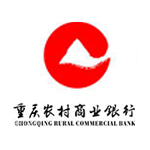Chongqing Rural Commercial Bank(601077)
Search documents
重庆农村商业银行(03618) - 关於科技创新债券发行完成的公告

2025-12-05 11:15
香港交易及結算所有限公司及香港聯合交易所有限公司對本公告之內容概不負責,對其 準確性或完整性亦不發表任何聲明,並明確表示,概不對因本公告全部或任何部分內容 而產生或因倚賴該等內容而引致的任何損失承擔任何責任。 本期債券於2025年12月3日簿記建檔,並於2025年12月5日發行完畢,發行規模為10億 元,品種為5年期固定利率債券,票面利率1.88%。本期債券募集資金將投向《金融「五篇 大文章」總體統計制度(試行)》中規定的科創領域,包括發放科技貸款、投資科技創新企 業發行的債券等,專項支持科技創新領域業務。 承董事會命 重慶農村商業銀行股份有限公司* Chongqing Rural Commercial Bank Co., Ltd.* 執行董事兼行長 隋軍 中國‧重慶,2025年12月5日 於本公告日期,本行執行董事為隋軍先生;本行非執行董事為胡淳女士、殷祥林先生及 彭玉龍先生;及本行獨立非執行董事為張橋雲先生、李明豪先生、李嘉明先生及畢茜女 士。 * Chongqing Rural Commercial Bank Co., Ltd. * : 3618 關於科技創新債券發行完成的公告 本公告乃根據香港聯合交易 ...
渝农商行:10亿元科技创新债券发行完成
Xin Lang Cai Jing· 2025-12-05 09:48
12月5日金融一线消息,渝农商行发布公告称,公司经中国人民银行批准,在全国银行间债券市场公开 发行10亿元人民币的科技创新债券(以下简称"本期债券")。 本期债券于2025年12月3日簿记建档,并于2025年12月5日发行完毕,发行规模为人民币10亿元,品种为 5年期固定利率债券,票面利率1.88%。本期债券募集资金将投向《金融"五篇大文章"总体统计制度(试 行)》中规定的科创领域,包括发放科技贷款、投资科技创新企业发行的债券等,专项支持科技创新领 域业务。 责任编辑:王馨茹 12月5日金融一线消息,渝农商行发布公告称,公司经中国人民银行批准,在全国银行间债券市场公开 发行10亿元人民币的科技创新债券(以下简称"本期债券")。 本期债券于2025年12月3日簿记建档,并于2025年12月5日发行完毕,发行规模为人民币10亿元,品种为 5年期固定利率债券,票面利率1.88%。本期债券募集资金将投向《金融"五篇大文章"总体统计制度(试 行)》中规定的科创领域,包括发放科技贷款、投资科技创新企业发行的债券等,专项支持科技创新领 域业务。 责任编辑:王馨茹 ...
渝农商行(601077) - 重庆农村商业银行股份有限公司关于科技创新债券发行完成的公告

2025-12-05 09:45
2025 年 12 月 5 日 重庆农村商业银行股份有限公司(以下简称"本行")经中国人民银行批准, 在全国银行间债券市场公开发行 10 亿元人民币的科技创新债券(以下简称"本 期债券")。 本期债券于 2025 年 12 月 3 日簿记建档,并于 2025 年 12 月 5 日发行完毕, 发行规模为人民币 10 亿元,品种为 5 年期固定利率债券,票面利率 1.88%。本 期债券募集资金将投向《金融"五篇大文章"总体统计制度(试行)》中规定的 科创领域,包括发放科技贷款、投资科技创新企业发行的债券等,专项支持科技 创新领域业务。 特此公告。 重庆农村商业银行股份有限公司董事会 证券代码:601077 证券简称:渝农商行 公告编号:2025-044 重庆农村商业银行股份有限公司 关于科技创新债券发行完成的公告 本行董事会及全体董事保证本公告内容不存在任何虚假记载、误导性陈述或 者重大遗漏,并对其内容的真实性、准确性和完整性承担法律责任。 ...
渝农商行(601077.SH):10亿元科技创新债券发行完成
Ge Long Hui A P P· 2025-12-05 09:39
格隆汇12月5日丨渝农商行(601077.SH)公布,公司经中国人民银行批准,在全国银行间债券市场公开发 行10亿元人民币的科技创新债券(以下简称"本期债券")。 本期债券于2025年12月3日簿记建档,并于2025年12月5日发行完毕,发行规模为人民币10亿元,品种为 5年期固定利率债券,票面利率1.88%。本期债券募集资金将投向《金融"五篇大文章"总体统计制度(试 行)》中规定的科创领域,包括发放科技贷款、投资科技创新企业发行的债券等,专项支持科技创新领 域业务。 ...
四川、贵州两省出台个人消费贷贴息政策
Zhong Guo Jing Ying Bao· 2025-12-05 09:00
在今年8月23家金融机构"定向"承接消费贷贴息政策之后,地方银行也将迎来政策红利。 12月4日,成都银行、成都农商行分别发布公告称,根据四川省相关政策,个人客户提用省内经办机构 发放且实际用于四川省内消费的贷款部分,可获得贴息,该贴息政策实施期限为2025年10月1日至2026 年3月31日。 12月4日,成都银行公告指出,本行将通过系统识别或人工审核方式对授权账户的交易信息进行识别核 验,贴息协议生效后,本行开始识别客户在政策执行期间使用个人消费贷款进行消费的交易信息,并对 其中符合财政贴息要求的消费交易进行识别认定,按照政策规定予以贴息。 从贴息的范围来看,多家银行公布的政策中具体贴息范围都包括单笔5万元以下消费以及单笔5万元以上 的汽车、教育、健康医疗等重点领域消费。 贴息标准方面,四川及贵州两省年贴息比例1%(按符合条件的实际用于消费的个人消费贷款本金计 算),最高不超过合同利率的50%。 在补贴额度方面,贵州银行和贵阳银行个人消费贷款累计贴息上限为3000元,单笔5万元以下个人消费 贷款贴息累计上限为1000元,叠加大额消费贴息后总额不得突破3000元上限;成都银行及成都农商行个 人消费贷款累计贴息 ...
重庆农村商业银行(03618.HK)获摩根大通增持95.71万股
Ge Long Hui· 2025-12-04 23:19
增持后,JPMorgan Chase & Co.最新持好仓数目为176,197,981股,持好仓比例由6.97%上升至7.01%。 格隆汇12月5日丨根据联交所最新权益披露资料显示,2025年12月1日,重庆农村商业银行(03618.HK)获JPMorgan Chase & Co.以每股均价6.4427港元增持好 仓95.71万股,涉资约616.60万港元。 | 表格序號 | 大股東/董事/最高行政人員名 作出披露的 買入 / 曹出或涉及的 每般的平均價 | | | | | 持有權益的股份數目 佔已發行的 有關事件的日期 | | --- | --- | --- | --- | --- | --- | --- | | | | 股份數目 | | | 請參閱上拉 * 註 | 有投票權股 (日 / 月 / 年) | | | | | | | | 优惠分市 | | CS20251204E00315 | JPMorgan Chase & Co. 1101(L) | | 957,058(L) | HKD 6.4427 | 176.197.981(L) | 7.01(L)01/12/2025 | | | | | | | 13, ...
银行行业2026年度投资策略:基本面筑底回升,聚焦息差改善和风险演绎
Orient Securities· 2025-12-04 14:44
基本面筑底回升,聚焦息差改善和风险演 绎 ——银行行业 2026 年度投资策略 核心观点 投资建议与投资标的 ⚫ 2026 年银行板块有望回归基本面叙事:十五五开局之年,政策性金融工具加持下 资产扩张仍有韧性;仍处于存款集中重定价周期,支撑净息差有望企稳回升;结构 性风险暴露仍期待有政策托底。2026 年,保险行业将系统性执行 I9,公募考核新 规的中长期引导效应也有望显现,我们看好 2026 年银行板块绝对收益。建议关注 两条主线:1、基本面确定的优质中小行,相关标的:南京银行(601009,买入)、 杭州银行(600926,买入)、宁波银行(002142,买入)、上海银行(601229,未评 级)、渝农商行(601077,买入);2、基本面稳健、具备较好防御价值的国有大行, 相关标的:交通银行(601328,未评级)、工商银行(601398,未评级)。 风险提示 经济复苏不及预期;房地产等重点领域风险蔓延;假设条件变化影响测算结果。 有关分析师的申明,见本报告最后部分。其他重要信息披露见分析师申明之后部分,或请与您的投资代表联系。并请阅读本证券研究报告最后一页的免责申明。 银行行业 行业研究 | 策略报告 ...
小摩增持重庆农村商业银行约95.71万股 每股作价约6.44港元
智通财经网· 2025-12-04 11:29
智通财经APP获悉,香港联交所最新资料显示,12月1日,小摩增持重庆农村商业银行(03618)95.7058万 股,每股作价6.4427港元,总金额约为616.6万港元。增持后最新持股数目约为1.76亿股,最新持股比例 为7.01%。 ...
小摩增持重庆农村商业银行(03618)约95.71万股 每股作价约6.44港元
Zhi Tong Cai Jing· 2025-12-04 11:29
智通财经APP获悉,香港联交所最新资料显示,12月1日,小摩增持重庆农村商业银行(03618)95.7058万 股,每股作价6.4427港元,总金额约为616.6万港元。增持后最新持股数目约为1.76亿股,最新持股比例 为7.01%。 (原标题:小摩增持重庆农村商业银行(03618)约95.71万股 每股作价约6.44港元) ...
行业深度报告:存款偏离与指标问题对当前司库策略的影响
KAIYUAN SECURITIES· 2025-12-04 07:49
——行业深度报告 刘呈祥(分析师) 朱晓云(分析师) liuchengxiang@kysec.cn 证书编号:S0790523060002 zhuxiaoyun@kysec.cn 证书编号:S0790524070010 2025 年 12 月 04 日 存款偏离与指标问题对当前司库策略的影响 司库负债策略讲究头寸、指标与成本的三面平衡 平头寸(补齐流动性缺口):1、当期缺口:总行需根据经营机构报备的每日走回 款情况,对全行当日资金余缺进行调剂。2、预期缺口——基于银行对资负两端 现金流预判,评估未来一段时间内可预见的流动性缺口,有以下几种模式:(1) 负债稳健,长期资产投放型,国有行为主。(2)中期融资压力型:3M-1Y 负缺 口突出,对市场利率波动敏感。(3)滚动融资压力型:1M 以内负缺口占比较大。 流动性风险指标:需满足 LCR、NSFR、LR、LMR 和存款准备金率等指标要求。 负债成本管理是"效益线":通过 FTP 等定价工具引导综合负债成本优化。 行 业 研 究 同业存单的资金属性或逐渐减弱,定价更多反映银行内部管理诉求。下阶段, 因司库的成本管控诉求增强,其用于调控缺口和指标的市场化资金来源几乎 ...


